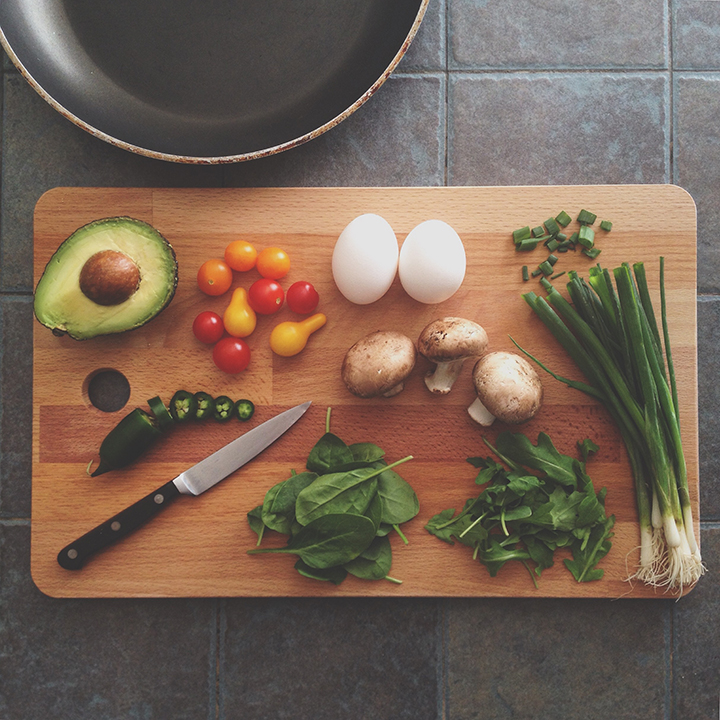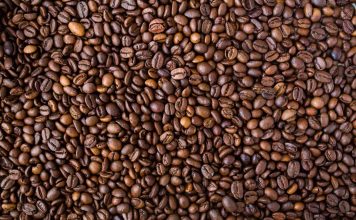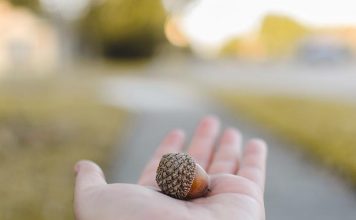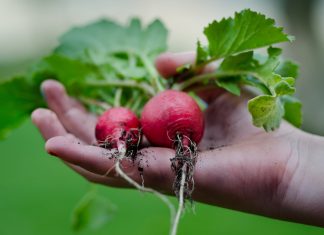 |
|
| Issue #60 • November/December, 1999 |
The warmest and most interactive place in my mom’s home was her kitchen. Cooking was her favorite pastime and her kitchen was a place she could relax and enjoy herself. There she entertained friends and neighbors, helped me with my homework, and even read her favorite mystery novels. Many of the subjects I write about are based on the many wonderful hours I spent in her kitchen, watching her perform her culinary magic on all kinds of foods. I grew up believing a kitchen is a place to enjoy yourself while being creative. Mom taught me that if I understood the basics and knew what I was doing at all times, cooking would be easier, faster, and more enjoyable.
This is true even when you’re working with foods and preparation methods that are new and unfamiliar.
Since I started writing for Backwoods Home Magazine I’ve spent a great deal of time talking with other people about their kitchen adventures. Along with their many culinary triumphs, folks share with me the problems they’ve encountered while trying to prepare their favorite foods and beverages. Most of the problems are minor but, when uncorrected, they can lead to wasted food and possible embarrassment in front of guests or family. For many cooks these problems lead to frustration with an environment that they eventually perceive as being more like a minefield than a kitchen.
As I read through my notes to recall some of these woeful tales of culinary disaster, I realize that most of these problems could be avoided by “knowing your basics,” as my Mom would put it. As an example, a close friend came to ask my advice one day. She loves Asian foods and loves to prepare many of the classic dishes, especially those from Thailand and southern India. But she couldn’t cook the delicate long grain Basmati and Jasmine rices, an integral part of many Asian cuisines, without having the individual grains split and curl at the ends. The rice tasted fine but the split and curled ends detracted from the presentation of these otherwise magnificent dishes. I told her to soak this kind of rice in cold water for 30 minutes before cooking it, and her problem was solved.
But it isn’t just techniques that can make your time in the kitchen more enjoyable. Many labor-intensive or difficult kitchen tasks can be performed more easily if you use a piece of equipment specifically designed for the task at hand. An example occurred the day my son’s hockey coach tried to shred a nutmeg berry with a paring knife. On the way to the hospital to get his finger stitched he complained, “Why don’t they invent something to make that job easier?”
Simple problems like these can frustrate anyone and make their kitchen seem like a war zone. What he didn’t know is that there are nutmeg graters which are easy to use, safe, and available in most food stores. This is how I grate nutmeg. Of course, a nutmeg grater may not be practical for someone who uses it just once a year on New Year’s Eve to grate nutmeg for eggnog, but if you use fresh nutmeg frequently, it is a practical and almost indispensible tool.
During the 25 years I’ve been a professional cook I’ve employed many simple techniques, procedures, and tools to help make my experiences in the kitchen more enjoyable. In this and the next column I’m going to share with you some of the preparation techniques, special equipment, and general knowledge that I use in my kitchen. Some of the information, and a couple of the recipes, are taken from some of my earlier articles. I have included them here because they’re working examples that demonstrate the benefits of knowing and using basic rules of culinary art.
Spices
Success or failure of many recipes often depends on the type and quality of flavor enhancers used. Spices like clove, coriander, black and white pepper, cumin, nutmeg, cardamom, allspice, and cinnamon are an absolute necessity in any kitchen. Unfortunately, spices quickly lose their flavor and aroma after they are ground. I suggest, if you must buy ground spices, buy them in the smallest amounts possible because the average life of preground spices is only about three months, even when they’re stored in the refrigerator where they can easily get lost. Plus it is usually not possible for the average home cook to use all of a package of preground spices in a three-month period, even when the spice is purchased in the smallest possible package. The solution to this problem is to buy whole spices and grind them yourself. Whole spices have a nearly indefinite shelf life when stored in airtight containers in a cool, dry space.
Whole spices are also cheaper to buy than preground spices, especially if you buy them from one of the many spice shops that advertise on the Internet. Buying preground spices in the supermarket is just like going to the sleaziest used car dealer you can find to buy an automobile; you pay too much and get second-rate quality. To buy them on the Internet, just fire up your search engine and type in the word “spice” and you’ll find vendors for almost any spice you can think of. If you live in or near a neighborhood with an ethnic grocer, try there.
Grinding whole spices has never been easier than it is today. Several kitchen equipment manufacturers make combination coffee grinder/spice mills that retail for about 10 dollars. These little mills have a high-speed electric motor that drives a small propeller-like stainless steel blade at a speed that will reduce even tough spices like whole clove to a fine powder in a matter of seconds. You can also buy a specially designed mortar and pestle, made of marble, that will perform the same grinding duties for under 15 dollars.
Food and gas
At the risk of sounding inappropriate, I would like to say a few words about an often embarrassing consequence of consuming a wide variety of foods-intestinal gas. Flatulence is not life threatening, unless you live with someone who’s got a real bad disposition. Otherwise, it just makes for an embarrassing and uncomfortable end to a wonderful meal.
The list of gas producing foods is long. It includes many of our favorites: milk, wheat, oats, potatoes, and many vegetables. Many of these foods contain what scientists call raffinose sugars, which are a prolific source of intestinal gas. The offending gas is produced when these sugars, along with starches and food fiber, reach the large intestine without being digested. Once there harmless bacteria residing in the bowel start to feed on them and give off the bothersome gas as a by-product. Raffinose sugars require a specialized enzyme (alpha-galactosidase) to break them down. However, our bodies don’t produce this enzyme, so our intestinal bacteria are left to the task.
There a number of products on the market that may help if you are troubled by flatulence. I am one who has been troubled with it all of my life, so about eight years ago I decided to try a new gas preventer manufactured by the same company that developed Lact-Aid. Beano, as it’s called, contains alpha-galactosidase and is designed to be popped into your mouth along with the first bite of any potentially offending food. Much to my surprise Beano worked. It cut down on the volume of gas and eliminated that uncomfortable bloated feeling, but odor was still a problem. Over the last few years, however, I have learned a few tips that also help to reduce gas generated by bean consumption.
- Cook your vegetables and beans completely. By completely I mean soft without being mushy.
- Discard the water you soak the beans in. This water is loaded with raffinose sugars. Also, precook your beans separately and discard the cooking water, before combining them with other ingredients in a recipe. This process does not hurt the integrity of the beans and will reduce the cooking time in long cooking recipes like baked beans.
- Many bean recipes call for the addition of other vegetables, such as onions and cabbage. Try reducing some of these ingredients before giving up the beans.
- Always carry a book of matches (no joke). A lit match produces ozone which oxidizes those mortifying odor-causing gases.
Here are a few tips on working with two of the worlds favorite flavor enhances, fresh garlic and fresh ginger.
Garlic
Not all fresh garlic is created equal. American garlic, which has a white skin, has a very strong flavor. Mexican and Italian garlic have mauve skins and a smoother milder flavor.
If fresh garlic is stored in an open container in a cool dark place, and the outer skin is not broken, it will stay fresh for more than two months. Once a clove is broken from the bulb, it will remain fresh for about five days.
The most efficient way to peel a garlic clove is what I call the Julia Child method. Place the unpeeled clove on the cutting board, clear the kitchen of all friends and family, then take careful aim and whack the clove with a the flat side of the blade of a cleaver or a french knife. It works every time, but I suggest you practice a little.
Once in a while we forget a bulb of garlic and the cloves start to sprout. This is not always evidenced by a little green shoot poking out through the clove. More often you will notice that the garlic has developed a very strong and harsh flavor and aroma. When I discover this, I usually toss the garlic in the trash and buy a fresh bulb. However, when this is not possible, you can tame the flavor by cutting each clove in half with a sharp paring knife and removing the little green shoot hiding inside. After removing the shoot, slice the garlic cloves instead of crushing, chopping, or pureeing them. This reduces the amount of essential oils that will be released into the recipe.
I feel that garlic is an essential ingredient in many foods and I use a lot in a short time. When I am assembling a recipe, especially a new one, I find that peeling garlic cloves can be a hassle. I solve the problem by first separating the cloves from a whole bulb of garlic then dropping them into boiling water for about 15 seconds. This makes them easy to peel. I then put the peeled cloves into a half pint jelly jar, cover them with peanut oil, seal the jar with a new lid, and keep the jar in the refrigerator. The garlic will stay fresh for two weeks. When the garlic is gone I use the wonderfully scented oil to add subtle flavor to a variety of hot and cold foods.
Once fresh garlic is placed in oil, that oil must be kept in the refrigerator, if you intend to use it in recipes after the garlic is gone. If I don’t use this garlic scented oil within three days after the garlic is gone, I discard the oil.
The garlic press
If you don’t own a garlic press I suggest you get one as soon as possible. Buy a good one, preferably one made of stainless steel. A garlic press makes quick work of preparing garlic for most recipes. It isn’t even necessary to peel a garlic clove before passing it through the press. Just pop the clove, skin and all, into the press and squeeze.
Cleaning a garlic press can be a hassle. To make cleaning less arduous, I keep a cup of warm water on the counter while I am using the press. During a cooking session, after each use, I place the press in the warm water. This prevents the garlic residue from drying onto the press. When I’m done cooking I take press from the water and place it in the dishwasher in the open position on top of the silverware. One pass through the dishwasher is usually sufficient. If you don’t have a dishwasher, or you don’t plan to run your dishwasher for a couple of days, add a little liquid dish soap to the warm soaking water, soak the press for about an hour, then clean it using a tooth brush you have set aside for special cleaning projects.
When working with the recipes in my columns, the only time a garlic press is called for is when the instructions call for garlic to be “minced fine.”
Ginger
In my opinion fresh ginger is one of the most versatile flavor enhancers available. It can be used to add spark to soups, salads, casseroles, vegetables, and baked goods. Fresh ginger can be purchased in two forms, young ginger and mature ginger. Young ginger, which is sold under the name of Jamaican ginger in many Asian grocery stores during the spring, has a tender, pale skin and a delicate mild flavor. Jamaican ginger does not require peeling before being used in a recipe. Mature ginger has a tough tan skin, which must be removed before use, and a strong spicy flavor and aroma. Mature ginger can be found in most food stores throughout the year.
Ginger, like garlic, can also be hassle to peel when you are trying to assemble a recipe. Under the best storage conditions, fresh ginger purchased in prime condition only has a shelf life of about three weeks. After that it ‘s smooth skin wrinkles and the flesh inside turns an ugly grey and develops an unpleasant acrid odor. Unless you use a lot of this very expensive root, half, if not more of what you buy, ends up in the trash. A great way to store freshly peeled mature ginger, is to cut it up into ½-inch pieces, place them in a half-pint jelly jar, and cover them with a light dry sherry. Seal the jar with a new cap and place it in the refrigerator where it will keep for three months. When the ginger is gone the, the ginger flavored sherry can be used to enhance the flavor of stir-fried and many other dishes. Fresh ginger can also be peeled, placed in freezer bags, and put in a freezer where it can keep for up to a year.
Barbecue
I feel that barbecue cooking must always be a pleasure. If it becomes a chore, stop and use your oven. Here are a few basic tips to help you make all barbecue sessions fun.
Equipment that is nice to have:
- Meat thermometer: This is a tool most professional cooks would feel naked without and usually have one hanging from their pocket when they enter the kitchen. They are easy to use and serve as a great tool for eliminating the complaint, “This meat is still raw.” Here’s a chart I find helpful when cooking meats, indoors or out.
- Long handled tongs: I don’t feel comfortable poking any food with a fork while it is being grilled. Tongs do a better job and don’t damage food by allowing valuable juices to spill into the fire.
- Basting brush: The expensive long handled brushes made for grilling do not baste food any better then a standard, flat, boar bristle kitchen brush.
- Long handled offset spatula: A nice item for turning delicate items like fish .
- Charcoal lighting chimney: This, in my opinion, is the safest and quickest way to light charcoal briquettes. Follow the instructions that come with the unit and you can’t go wrong.
- Skewers with ½-inch wide flat shanks: Great for solving the problem of food spinning around as you try to turn it over.
Here are some tips to make your barbequing easier.
- Give yourself at least 30 minutes after you light your charcoal to allow it to burn to the point of forming a white ash.
- Use only high quality brand-name charcoal. Bargain charcoal causes more problems than cost savings justify.
- Store your charcoal in a place that is dry. If this is not possible, place your charcoal into high quality plastic bags and seal the bags tight.
- Use only the amount of charcoal required for the item being grilled. Excessive amounts cause dangerous flare ups and charred food.
- Charcoal briquettes and natural lump charcoal burn at different temperatures: Briquettes burn at about 350 degrees F; natural charcoal burns at 600 degrees F.
If you have a Weber-type grill with a cover and would like to add a new fragrance and flavor to your grilled foods, try this.
Mix together:
4 dried bay leaves, crumbled
1 tsp. dried oregano leaves
1 tsp. dried thyme leaves
½ cup hardwood chips, soaked in warm water for 30 minutes
½ cup loose tea leaves
1/3 cup brown sugar
zest from one orange
1 tsp. whole anise seed
Just before placing the items to be grilled in the grate, move all of the coals to one side of the grill, place the items to be grilled on the grate, but on the opposite side of the grill, so they are not directly over the coals, then sprinkle this mixture onto the hot coals. Place the cover on the grill, making sure the upper and lower air holes are open about half way. Leave the lid in place, without peaking for about 15 minutes. Remove the lid and finish cooking as you usually do.
Later I’m going to give you more kitchen tips and I will suggest some other pieces of equipment that will help make the time that you spend in the kitchen more enjoyable. At one time some of this equipment was very much overpriced and not widely available. Technology and free market competition has changed all of that. High quality kitchen equipment, designed for the home kitchen, is now available in many retail stores and on the Internet at good prices. I’ll show you how to use some of them in the next issue.
| My own chili seasoning | |
|
Here’s a simple recipe that demonstrates the advantage of using whole spices. I dislike commercial chili powders. In my opinion they all add “off-flavors” to chili or any other dish. But when chili powder is made from scratch you will produce a seasoning with which you can make great chili and it can also be used to enhance the flavor of many other dishes including salad dressings, table sauces, and casseroles. If you grind up a batch of this seasoning it will keep for months when stored in an airtight container and kept in your freezer. My formula is designed to add a warm, nutty chili flavor to dishes, not spicy heat. You can add as much hot flavor as you can handle by simply adding measured amounts of powdered cayenne pepper or other pure, hot chili powder. Don’t try to prepare this chili seasoning with preground spices. Use whole spices you grind yourself; otherwise, the result is a dull, stale-tasting seasoning.
|
|
| Ingredients: | |
Ingredients: 2 oz. dried ancho chilies, stems, seeds, and veins removed 2 dried pasilla chilies, stems, seeds, and veins removed 2 Tbsp. whole cumin seed, toasted 1 Tbsp. whole coriander seed, toasted 4 whole cloves, toasted ½ tsp. allspice berries, toasted 1 Tbsp. dried marjoram 1 tsp. dried oregano 1½ tsp. dried, granulated garlic 2 Tbsp. hot Hungarian paprika |
|
Method:1. After removing the stems, seeds, and veins from the ancho and pasilla chilies, break or cut them up into pieces. Toast them over low heat in a heavy-bottomed skillet until they are fragrant, slightly darkened, and somewhat crisp. Do not walk away from this procedure because they’ll scorch. You want to stir the peppers constantly while they are in the pan. When they ‘re ready, set the toasted peppers aside to cool. 2. Using the same procedure described above, lightly toast the cumin seed, coriander seed, whole cloves, and allspice berries. 3. In a spice mill (or a coffee grinder that is reserved only for grinding spices) process the toasted peppers into a fine powder. Repeat the process with cumin seed, coriander seed, whole cloves, and allspice berries. It is important to grind each spice separately, because each has a different density and will not grind to the same consistency if ground together. 4. Combine the powdered chilies and spices with the marjoram, oregano, granulated garlic, and Hungarian paprika.
|
|
| Vermont baked beans | |
|
Several years ago my daughter announced to me that she did not like baked beans. This was a real let down because, like many New Englanders, baked bean casserole is a regular item on our weekly menu. “I don’t like the taste of molasses, and the beans make me feel fat and uncomfortable,” were her reasons. I knew how to get around the molasses, but the intestinal gas was going to take some work. After two years of research and 12 failed recipe attempts I came up with three recipes that relieved both problems, plus satisfied the taste of her two brothers Jason and Michael. This recipe also puts to the test all of the kitchen tips that we have been talking about in this column. However, the roasted spices are not ground; they are cooked whole. When spices are cooked whole instead of ground, they impart a more subtle flavor. Give the recipe a try and let me know what you think. Note: slab bacon is processed two ways. One type is cured in brine and the other is dry smoke cured. If at all possible use the dry cure variety in this recipe. You can tell if bacon is cured in brine by reading the label on the package. Don’t let anyone tell you that there is no taste difference between the two. The taste of the dry cured is far superior.
|
|
Ingredients: 1 cup dried white beans 1 cup dried kidney beans water to soak beans water to simmer beans 1 tsp. whole cumin seed ½ tsp. whole coriander seed 1 stick cinnamon 6 whole black peppercorns 4 whole cloves 2 dried bay leaves ½ lb. smoke cured slab bacon, diced (If you don’t eat pork, omit the bacon. It will change the flavor of the dish somewhat but the casserole will still be delicious.) |
1 Tbsp. olive oil 1 medium onion, diced 1 carrot, peeled and diced 3 fresh garlic cloves, chopped fine 1 Tbsp. marinated fresh ginger, chopped fine ½ cup beer or ale 1 cup chicken stock 1 10 oz. can diced tomatoes with chili peppers ½ cup pure maple syrup zest from one orange ¼ cup fresh cilantro, chopped |
Method:1. Soak the beans overnight in cold water. Use enough water to cover by at least two inches. Change the water and add fresh water at least once during the soaking process. 2. Discard the soaking water, rinse the beans in cold water, and set them in a suitable size pot over medium heat. When the water starts to boil, reduce the heat to a point where the beans are just simmering. Simmer them for 45 minutes, or until they begin to soften. Test them for tenderness by biting into one or two beans from the pot. Drain the beans, discard the cooking water and set the beans in an 8 or 10 cup casserole or bean pot. 3. In a heavy bottom skillet, roast each of the spices over low heat until they begin to brown and add them to the beans. Add the bay leaves without roasting them. 4. Add the diced bacon to the same skillet and saute over low heat until it begins to brown and about half of the fat has been rendered out. Remove the rendered bacon from the fat and add it to the casserole. 5. Add the olive oil to the same pan, increase the heat to medium, and add the onion and carrot. Saute this mixture until the onion becomes opaque, add the garlic and ginger. Continue to saute the mixture for about 30 seconds then add the mixture to the casserole. 6. Preheat the oven to 250 degrees. Combine the beer or ale with the chicken stock, diced tomatoes and maple syrup. Add this mixture to the casserole. 7. Put the lid on the casserole and place it in the oven. Slow cook the beans for five or six hours or until the beans are very tender without being mushy. If the beans become dry during this time, rehydrate them by adding a little chicken stock. 9. During the last hour of cooking remove the cover from the casserole or bean pot. 10. While the beans are cooking, remove the zest (the colored part of the skin) from the orange with a hand grater and mix it with the chopped cilantro. Caution: Don’t remove any of the white under flesh from the orange. This flesh is usually very bitter and will ruin the delicate flavor of the casserole. Sprinkle this mixture on top of the casserole just before serving.
|
|














